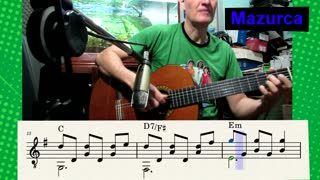Premium Only Content
![Beethoven 9th Symphony in D Minor Op125 , 1st Mov - [1st D Trumpet Part] (sheet music)](https://1a-1791.com/video/s8/1/g/V/g/4/gVg4e.qR4e-small-Beethoven-9th-Symphony-in-D.jpg)
Beethoven 9th Symphony in D Minor Op125 , 1st Mov - [1st D Trumpet Part] (sheet music)
D trumpet part of 9th Symphony of Ludwig van Beethoven
Performer Pages Royal Concertgebouw Orchestra (orchestra)
Performers Otto Klemperer (conductor)
Publisher Info. Amsterdam: Concertgebouw Orchestra, 1956.
Misc. Notes Recorded performance: Amsterdam, 17 May 1956
(public domain)
PLAYLIST: https://www.youtube.com/playlist?list=PLkml7ZJ51KiwWwjT278mSBWHZC2Se3q_V
Uma excelente maneira de estudar e aprimorar sua prática orquestral é acompanhar os grandes classicos com a parte do seu instrumento. Contar os compassos de pausa, analisar a interpretação, perceber a dinâmica e etc., irá proporcionar um entendimento cada vez melhor de todos os aspectos de se tocar em uma orquestra.
An excellent way to study and improve your orchestral practice is to accompany the great classics with your instrument part. Counting the pause measures, analyzing the interpretation, understanding the dynamics, etc., will provide an ever better understanding of all aspects of playing in an orchestra.
Symphony No. 9 in D Minor, Op. 125, byname the Choral Symphony, orchestral work in four movements by Ludwig van Beethoven, remarkable in its day not only for its grandness of scale but especially for its final movement, which includes a full chorus and vocal soloists who sing a setting of Friedrich Schiller’s poem “An die Freude” (“Ode to Joy”). The work was Beethoven’s final complete symphony, and it represents an important stylistic bridge between the Classical and Romantic periods of Western music history. Symphony No. 9 premiered on May 7, 1824, in Vienna, to an overwhelmingly enthusiastic audience, and it is widely viewed as Beethoven’s greatest composition.
Symphony No. 9 in D Minor, Op. 125, byname the Choral Symphony, orchestral work in four movements by Ludwig van Beethoven, remarkable in its day not only for its grandness of scale but especially for its final movement, which includes a full chorus and vocal soloists who sing a setting of Friedrich Schiller’s poem “An die Freude” (“Ode to Joy”). The work was Beethoven’s final complete symphony, and it represents an important stylistic bridge between the Classical and Romantic periods of Western music history. Symphony No. 9 premiered on May 7, 1824, in Vienna, to an overwhelmingly enthusiastic audience, and it is widely viewed as Beethoven’s greatest composition.
#trumpetsheetmusic #beethovensymphony #classicmusic
-
![[TRUMPET METHOD] Rubank Intermediate Method for Cornet or Trumpet - 1 to 5](https://1a-1791.com/video/s8/1/Y/G/q/k/YGqko.0kob-small-TRUMPET-METHOD-Rubank-Inter.jpg) 4:40
4:40
The channel for Trumpeters of all levels
1 year ago $0.03 earned[TRUMPET METHOD] Rubank Intermediate Method for Cornet or Trumpet - 1 to 5
106 -
 1:17
1:17
dubettoni228
3 years ago $0.17 earnedMazurca (sheet music)
1392 -
 3:18
3:18
Easy Piano Tutorials
3 years ago5th Symphony in C Minor - Ludwig Van Beethoven | Easy Piano Tutorial
47 -
 13:40
13:40
Preston Stewart
6 hours agoMajor Protests Erupt in Ukraine
405 -
 LIVE
LIVE
LFA TV
19 hours agoLFA TV ALL DAY STREAM - WEDNESDAY 7/23/25
1,481 watching -
 LIVE
LIVE
sophiesnazz
2 hours agoI AM BACKK !socials
7 watching -
 LIVE
LIVE
The Rabble Wrangler
13 hours agoRimworld with The Best in the West!
51 watching -
 19:16
19:16
Clownfish TV
12 hours agoColbert Calls Himself a MARTYR and Tells the President to GO F HIMSELF!
1.1K17 -
 1:14:39
1:14:39
vivafrei
3 hours agoTrump Accuses Obama of TREASON! Macron SUES Candace Owens? Canada is Run By the INMATES! & MORE
102K45 -
 2:05:57
2:05:57
Pop Culture Crisis
3 hours agoVanessa Kirby ALL OVER Pedro Pascal at FANTASTIC FOUR, Ozzy Reincarnated as AQUAMAN? | Ep. 883
20.3K1